
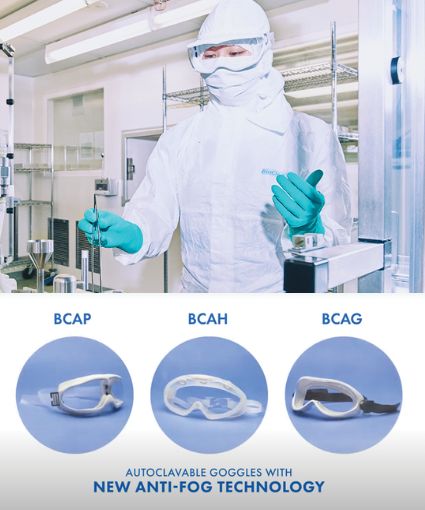
FOR MANY LIFE SCIENCES WORKERS WEARING GOGGLES IS AN ESSENTIAL PART OF THEIR PERSONAL PROTECTIVE EQUIPMENT (PPE) TO PROTECT THEMSELVES AGAINST HARSH CHEMICALS AND THE PRODUCT FROM CONTAMINATION.
However, working in goggles all day can result in them becoming foggy or steamed up which can be a hazard as well as an inconvenience. Fogging occurs when there are variable temperatures, humidity, change in body temperature, or even from wearing a face mask. For all of these conditions, it is important to find a comfortable solution that can withstand fogging in whatever environment you are in. It is also advised to use a goggle with an anti-scratch coating to further prolong the life of the lenses.
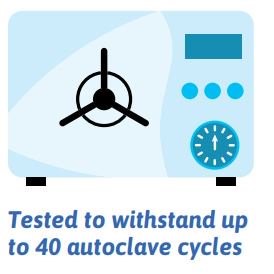
The BioClean™ range of autoclavable goggles (BCAP, BCAH, BCAG) features anti-fog technology which maintains a clear lens even after multiple autoclave cycles. Tested to withstand up to 40 autoclave cycles** they offer an economical solution to eye protection, with the added benefits of an indirect ventilation system, comfortable super-soft frames, and a panoramic version for increased field of vision. The goggles also have a toughened polycarbonate, anti-scratch & optically correct lens and conform to Personal Protective Equipment PPE Regulation (EU) 2016/425 and comply with EN 166:2001* standard for personal eye protection.
Click here to view BioClean™ range of autoclavable goggles (BCAP, BCAH, BCAG)
* not applicable for BCAH goggles
** Under laboratory conditions. Anti-fog performance remains for up to 25 cycles
with no degradation (under laboratory conditions)
WASHING BIOCLEAN™ AUTOCLAVABLE GOGGLES PRIOR TO AUTOCLAVING
The BioClean™ range of autoclavable cleanroom goggles are designed to be autoclaved by hot steam at 121°C for 30-minute cycles. The goggles are very robust and can be washed prior to autoclave in water at a temperature range of between 60°C to 121°C. A mild detergent can be used as long as it is diluted in the water first – we suggest 100ml of household dishwashing detergent for every 5 liters of deionized water.
.jpeg)
Place the goggles inside a bucket of mild detergent prepared and mixed as suggested above.
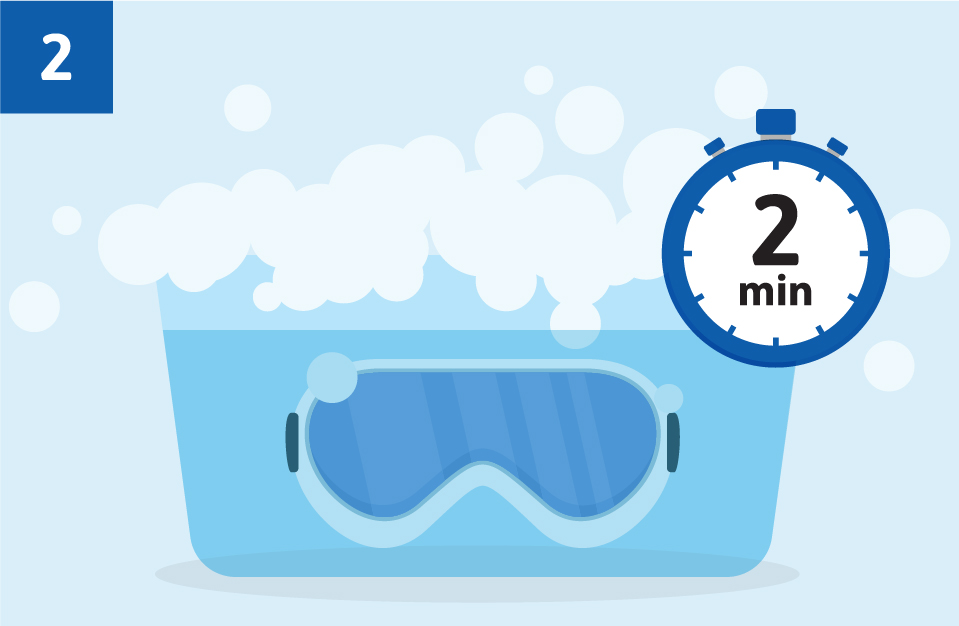
Let the goggles soak for 2 minutes in the soapy solution
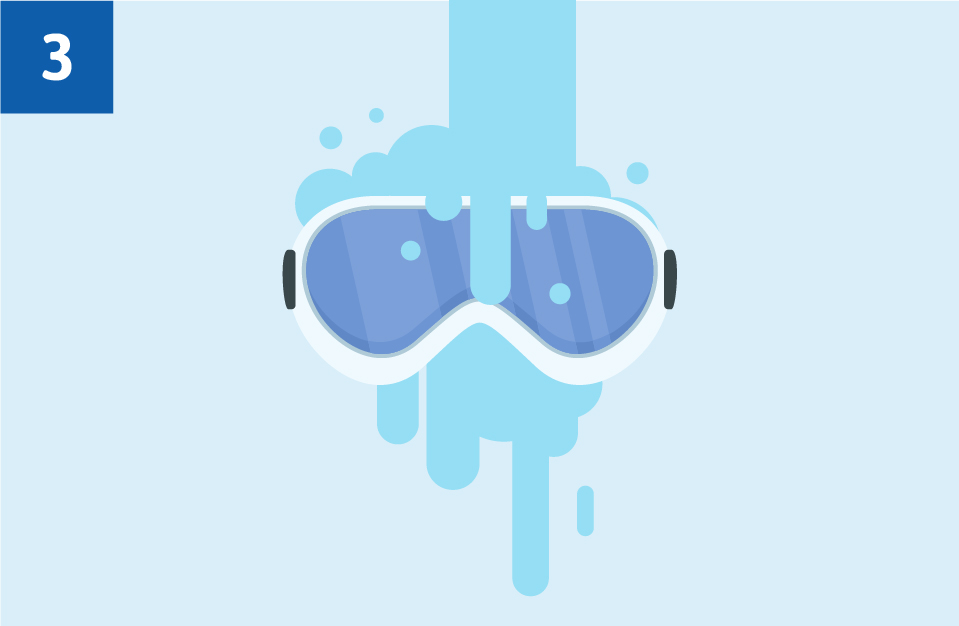
Remove the goggles and rinse thoroughly with clear, clean deionized water to remove any residual detergent and avoid streaking. Use fresh deionized water for each rinse.
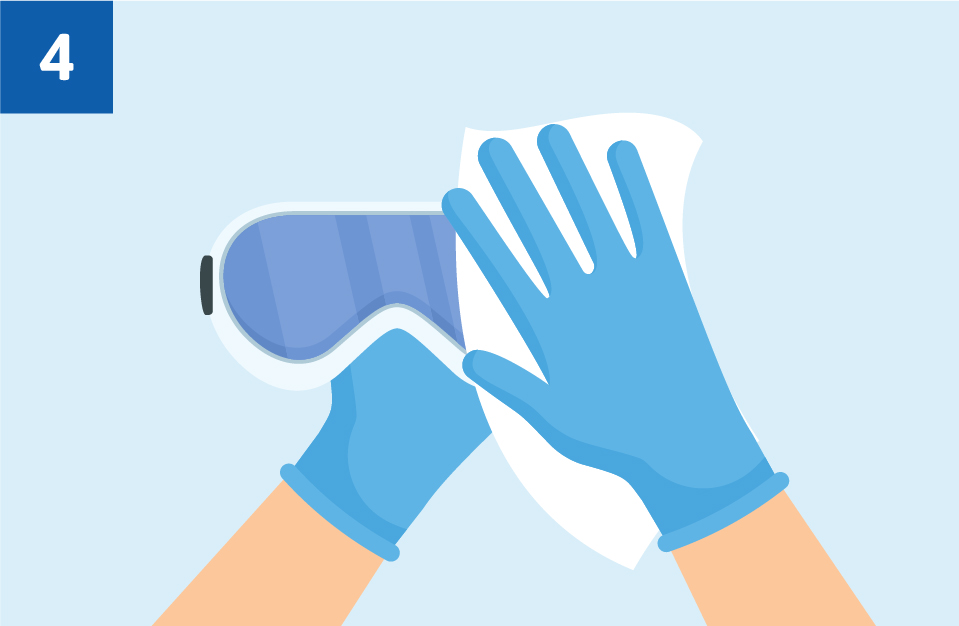
After washing and rinsing, we recommend that the goggles are dried with cleanroom quality POLYESTER wipes before putting them into the autoclave. This would also help remove any other remaining potential deposits from the detergent.
Please note it is important that the water used to wash and rinse the goggles should be deionized, demineralized, or distilled water. If normal untreated tap water is used it may have mineral deposits in it that will become apparent when autoclaved, and these may be deposited on the lens, potentially causing them to be damaged.